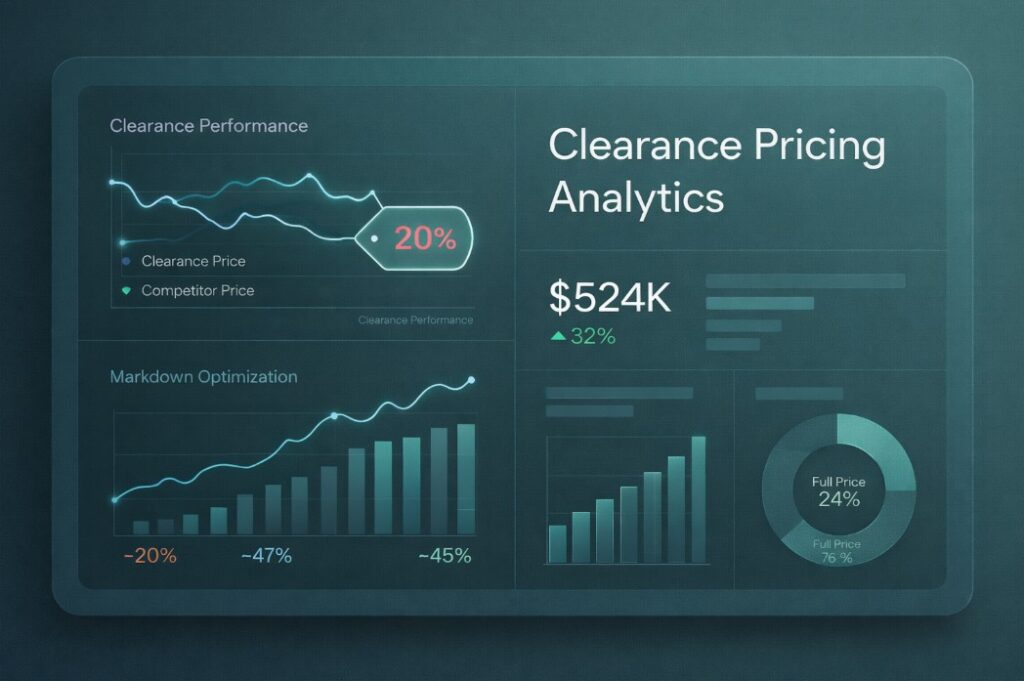- Product
- Solution for
For Your Industry
- Plans & Pricing
- Company
- Resources
For Your Industry
AI pricing technologies can help to achieve revenue growth while still keeping customers happy.
As the economy recovers from the pandemic, prices for goods and services continue to climb.
For retailers, inflation represents another hurdle in a long list of pandemic-induced volatilities. From panic buying and store closures to operating restrictions and supply chain shortages to new consumer behavior shifts and revenge shopping, retailers have had a lot to contend with.
This widespread unpredictability has also wreaked havoc on traditional pricing practices based on supply and demand. And now, with the rising costs of goods squeezing already squeezed margins, retailers are turning to science — particularly, artificial intelligence (AI) pricing technologies — to find relief.
Rethink Your Response to Rising Costs
When a cost rise crosses a retailer’s desk, the obvious next step is to consider, “How much should I boost my retail price?” When confronted with escalating prices, many retailers resort to simplistic criteria (e.g., increase by X% or retain existing margin or similar cent profit).
Taking a price rise in this economic reality, however, feels paradoxical to delight buyers, particularly price-sensitive ones. Grocery budgets are tight, and consumers are experiencing the consequences of inflation as well.
Overall price increases in reaction to inflation harm retailers’ capacity to achieve optimal results at a time when pricing can be such a key strategic lever to grow both profits and share.
Instead, astute retailers see inflation as a chance to use artificial intelligence and pricing optimization technologies to increase revenue while keeping customers satisfied.
To achieve so, however, a balanced strategy is required.
Take a Data-Driven Approach to Pricing during Inflation
With inflation showing no signs of abating, retailers must take a scientific and balanced strategy to remain profitable. As a preliminary step, retailers should do a key value item (KVI) study to establish which things are most valuable to their customers.
With KVI data, merchants will know whether to maintain prices unchanged or even lower prices on the things that matter the most to customers, while raising costs on less important background items. With brand loyalty on the decline, finding the best price for items is more crucial than ever.
This involves utilizing self-learning methods that can scan massive quantities of data, compute several pricing situations, and recommend the best possible price to please consumers and produce higher revenue.
When done well, everyone benefits: customers enjoy cheaper costs on the things they care about most, and retailers generate balanced growth. Allowing advanced price science to strike that balance is crucial, allowing retailers to accomplish results that would otherwise be impossible.
Keep an Eye on Competitors’ Responses to Inflation
Consumers nowadays are only a few clicks away from performing a price comparison, thus competitive pressure is at an all-time high. As a result, understanding what your rivals are doing in reaction to inflation is crucial.
Having competition analytics in place can assist you in understanding how other retailers in your area are leveraging pricing to maintain their margins during an inflationary environment, and will naturally assist you in determining how to react in contrast.
You’ll be able to deal with the issues of pricing via inflation if you retain a strong awareness of what your consumers are purchasing and how their demand swings in connection to price, as well as insights into where you stand relative to your rivals’ pricing.
Retailers may use price optimization science to build their ties with important vendor partners in addition to keeping great relationships with consumers during times of inflation.
With access to predictive data, retailers can assess the effects of cost increases and convey those effects during vendor negotiations. If a vendor sees that a lower cost rise would result in a better overall conclusion than a greater cost increase, they may be more flexible in their talks, allowing them to save money.
While many view inflation as a threat, it can actually be an opportunity to grow share and profits and strengthen price perception using a proven approach that is a win–win for retailers, consumers, and vendors alike.
The fact that some retailers will stick to extreme price increases and unsophisticated methods makes them a target for the more sophisticated retailers during a critical time, and there will be clear winners and losers in this inflationary period.













Missing an important marketplace?
Send us your request to add it!